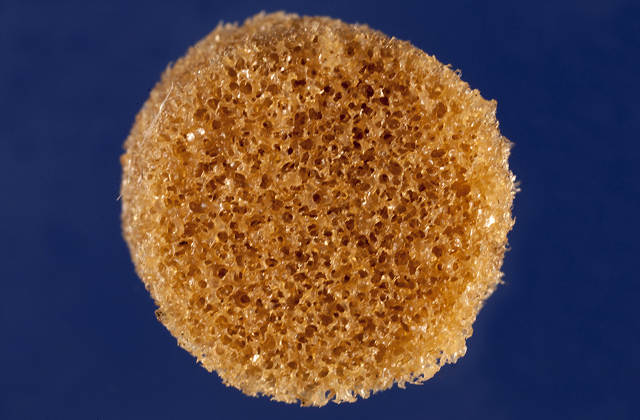 This new material is capable of molding itself exactly to the shape of the bone defect without breaking. Image credit: American Chemical Society
This new material is capable of molding itself exactly to the shape of the bone defect without breaking. Image credit: American Chemical Society
A new shape memory polymer has been developed, which can expand with warm salt water to accurately fill bone defects and aid in new bone growth.
Birth defects, injuries or surgery may cause large bone gaps that may not heal naturally. These bone defects change the appearance of a person significantly.
This new material, created by researchers at Texas A&M University headed by Melissa Grunlan, holds promise in overcoming the drawbacks of earlier methods such as autografting or using rigid bone putty to plug gaps.
According to Grunlan, these conventional techniques are far from ideal - autografting uses bone from other areas of the body to fill the gap, but this can lead to secondary complications, and bone putty dries very brittle, and doesn't allow new bone to grow in it's place.
This approach will be showcased by the research team in one of almost 12,000 presentations at the world’s largest scientific society, the 248th National Meeting & Exposition of the American Chemical Society (ACS) taking place this week.
Poly(ε-caprolactone) molecules are linked together to form a biodegradable, porous, elastic foam, which is already being used in certain medical implants. The material formed has a large number of interconnected pores and looks like a stiff sponge. It is possible for bone-forming cells to migrate in and grow in these pores.
The work we've done in vitro is very encouraging. Now we'd like to move this into preclinical and, hopefully, clinical studies.
Melissa Grunlan
The shape-memory polymer becomes highly malleable and soft at 60°C. During surgery to repair a bone defect, the SMP is warmed to that temperature and the defect is filled in with the softened material. When the material cools to body temperature, it becomes stiff again, precisely locking into position.
The SMPs were also coated with a sticky substance, polydopamine, which helps in locking the polymer to place by causing mineral formation. This also aids osteoblasts, cells, which produce bone, to stick to and diffuse all through the polymer. Since the SMP is biodegradable, the scaffold will slowly vanish, leaving behind new bone tissue.
Results in lab tests have shown that the material supports new bone growth very well. The researchers' next step will be to try using the material to heal bone defects in animals.